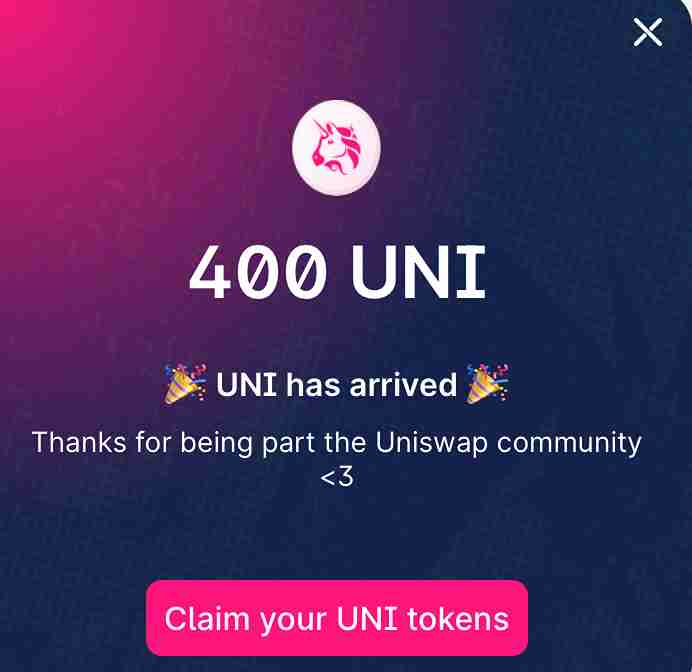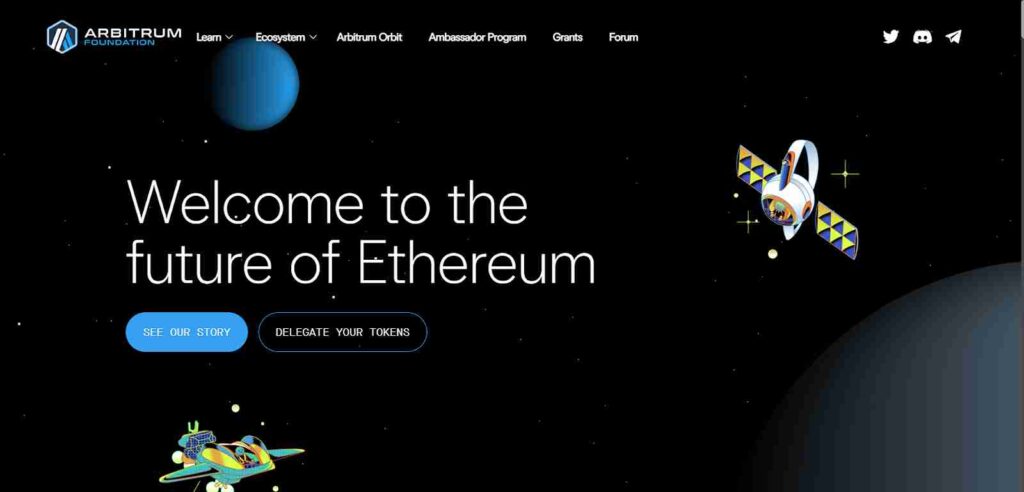“Crypto Airdrops are a good way to reward loyal users and attract new ones,” said Chabgpeng Zhao, the founder and CEO of Binance. “It is similar to having a surprise birthday gift mailed directly to your home.”
Airdrops in the crypto world are a marketing strategy used by Web3 companies to incentivize their active community or encourage adoption by depositing digital tokens directly into the wallets.
This article explains what airdrops are, how they differ from ICOs and STOs, their potential threats, and how to avoid them simply and easily. Read on and discover one of the most astonishing topics of the crypto world.
What Is Crypto Airdrop?
A crypto airdrop is a promotional initiative by Web3-based companies or startups to encourage adoption or bootstrap their project.
Here, a small amount of virtual currency is deposited directly into the user’s wallet for free or in exchange for small services like retweeting or reposting a post sent by the company announcing airdrops. Airdrops are public campaigns designed to spread awareness about the company’s platform and encourage the adoption of new tokens or coins.
Promotion of airdrops is generally done on the company’s official website, social media sites like Twitter, Discord, Reddit, or some crypto forums like bitcoin.com.
Crypto coins or tokens are deposited only to specific wallets depending on the Blockchain network or amount of coin holding.
To qualify for an airdrop may rely on a particular factor, like the recipient must hold some coins or have to perform specific tasks, such as writing a promotional blog post or Twitter thread, reposting the company’s post about the project, increasing the community base of the network or increasing the impressions and interaction with their project and network.
Are you new to Web3? Here’s a Comprehensive guide to know all about Blockchain forks by Droomdoom.
Types of Crypto Airdrops
Standard Airdrop
No task completion is required to qualify for a standard airdrop; participants just need to express their interest in receiving the airdrop. The individual must sign up with a valid email address. This type of airdrop can be time-sensitive and doled out on an FCFS basis (first come, first serve).
They may have a limited supply of coins to distribute, limiting how much each person can get. For example, RabbitX has used standard airdrops to roll out their new coin and create a new user base.
However, they are popular due to their simple method, which makes them vulnerable. It is effortless for an individual to create multiple wallets to drain out airdrop resources.
Bounty Airdrop
To qualify for bounty airdrops, participants may need to perform specific tasks. Some companies roll out bounty airdrops when they need low-lift promotional work. The tasks assigned could be retweeting, posting a promotional blog post, writing a Twitter thread and tagging the company’s handles, joining their discord channel, or signing up for their newsletter.
Users may need to perform specific tasks to earn points, and using those points, they can participate in airdrop. For example, a user can participate in an airdrop after earning 500 points. Each task is labeled as 100 points like the Foodie NFT platform rolled out nine 9-step to-do lists to become eligible to participate in their $75000 airdrop, including following their social media handles and tagging friends.
Holder Airdrop
As mentioned in the name ‘holder,’ this airdrop is specifically for those who may hold a certain number of existing tokens or hold existing tokens at all at the time of promotion.
Companies mainly design holder airdrops to incentivize their most loyal and invested users. Some airdrops may only reward users who meet or exceed a threshold amount set by the company.
One downside is that some holders may not want the airdrop.
Exclusive Airdrop
According to the name, the exclusive airdrop is explicitly designed for some users who may not have any holding in their wallets. This type of airdrop is not based on how much coin the user holds but on factors like time spent on the project, money spent on non-token activities, and level of engagement on the forum.
For example, Swapping, bridging, or staking the token.
Exclusive airdrop is a more centralized way of rewarding users closest to the project. For example, Uniswap’s airdrop of 400 UNI tokens for its long-standing users, regardless of their holding status.
Raffle Airdrop
Raffle airdrops implement a lottery mechanism. Here, companies may release the number of airdrops they are willing to give and encourage users to earn raffle tickets. Raffle tickets can be achieved by many methods, such as earning points, simply expressing interest, or holding some tokens.
This results in the number of individuals participating exceeding the number of airdrops to be delivered by the company. Therefore, a raffle occurs, and several wallets are selected randomly for the reward.
For example, gaming platform Revv rewarded $500 to their 100 lucky winners.
Game-Changing Airdrops
Look
Look is a token NFT trading platform LooksRare on Ethereum issued to increase its user base. Looksrare entered into a genre with tough competition. So, you incentivize people. LooksRare airdropped 12% of LOOKS total supply to anyone with a combined 3 ETH trading Volume or snapshot of the period from January to December. It worked. They captured a large user base within only four months.

Uniswap
In September 2020, the decentralized protocol UNISWAP airdropped 400 UNI tokens worth $1200. Whoever interacted actively with this decentralized exchange before September 1, 2020, was eligible for the airdrop. Uniswap distributed 150m UNI tokens, with more than half of it going to their team members and investors.

Arbitrum
On March 16, 2023, Arbitrum announced its airdrop and ARB token, which went live on March 23, 2023.
New to Cryptocurrency? What are the inevitable cryptocurrency scams that you’re likely to fall for?
The Arbitrum rewarded users based on their activity on two chain versions, Arbitrum One and Arbitrum Nova. It was based on a point system. The user needed to earn at least three points to become eligible for the airdrop, which could be achieved by performing transactions, liquidating, and bridging funds on Arbitrum.
More points = More tokens in Airdrop.
70% of the airdrop resources went to team members and investors with equal to or more than four years of investing period.

Airdrops vs. ICOs vs. STOs
Crypto airdrops and Initial Coin offerings may appear the same in front, but they are pretty different. Unlike ICOs, crypto airdrops don’t require any investment.
ICOs are very similar to IPOs (Initial public offerings) in raising an investment and locking the funds from investors. In ICOs and IPOs, allotment is done through a lottery mechanism. If users are not allocated the token they bid for, funds are returned automatically to their wallets.
ICOs are initially offered to VCs (venture capitalists). Though ICOs require an upfront investment, investors are expected to buy the coin or tokens instead of going for free airdrops.
The ultimate goal behind Initial Coin offerings and airdrops is entirely different. ICOs are intended to attract investors willing to put their capital into the project. This user base is more likely to see this project as their investment. Alternatively, airdrops are intended to spread awareness among small users.
STOs ( Security Token Offerings) are a method for fundraising in the crypto world. It involves issuing security tokens representing ownership in an investment asset like real estate or equity in a company.
Learn more ways to spot and avoid Crypto scams, compiled by DroomDroom.
In STOs, the information is recorded for security tokens. However, the main difference is that STOs are saved in the Blockchain and represented by the token. Unlike airdrops or ICOs, STOs are regulated and backed by assets that ensure investor protection.
Scams and Prevention
Mostly, the ultimate goal of crypto airdrop is promotion. It never seeks capital investment. Some crypto scams involving sending some bitcoins or tokens for winning the airdrops come under dusting scams.
Airdrops are generally too-good-to-be-true incentives, where it’s easy for users to fall prey to scams. One type of airdrop scam is phishing, which relies on promising users fake airdrops. In phishing scams, users are redirected to third-party websites to input their wallet information to win the phony airdrop. The scam is complete once users connect their wallets using their secret keys or phrases, and their wallet gets drained.
There is another type of airdrop scam called rug pull scam. It can be described through this phrase: “pumping and dumping.” Here, users can be enticed to invest in certain security hacks, buy many specific tokens to increase their demand or get an airdrop. Scammers could liquidate their shares when the token’s value reaches a certain level, thereby dropping its value.
The unwary investors then are left with a token worth nothing.
Or, some people can approach the investor to invest in their project and later run away with all the money without giving any notice.
Conclusion
Crypto airdrops play a significant role in promoting new coins and encouraging adoption in small communities. It can be an excellent way for Crypto enthusiasts to get free tokens and NFTs. However, it’s essential to be cautious and avoid scams. The go-to phrase for every crypto enthusiast in the Crypto world is “Do your own research.”


















